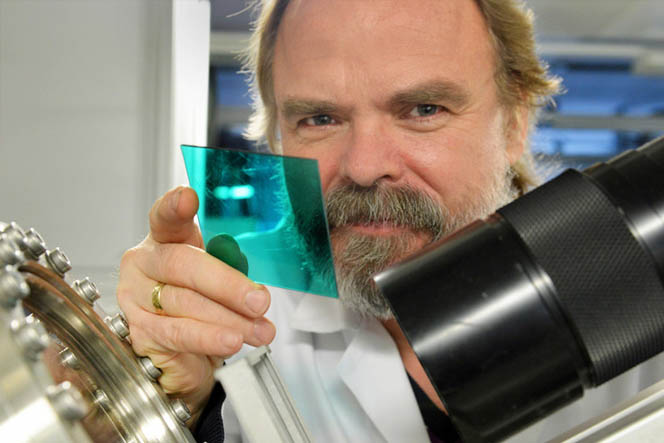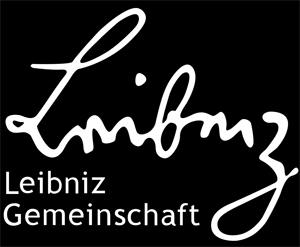It all comes down to the exact temperature. If the mass is too hot, the nucleus dissolves like a sugar cube in coffee. If it’s too cool, the crystals form “spontaneously” and are useless to their grower. When asked which one he prefers, he says: “A little too cool.” Then at least the nucleus survives.
Mario Bützam welcomes us for an interview at his workplace on Max-Born-Straße. Visitors of the growing areas are greeted by a permanent hum. It’s the cooling water, explains Brützam, which is indispensable. Six massive machines developing enormous degrees of heat line the inside of the area. they look like chrome boilers at first glance. “They are the growing plants,” says Brützam. Incubator might be a more fitting term, because what happens on the inside is similar to the breeding process: “It certainly requires a level of patience.”
The results are showcased in a display at the door. Glass rocks in amber, green, red, violet and white. The expert calls them “crystalline solids”. On average it takes about a week for those shapes to develop. Crystal grower: “It’s not actually a classic vocation.” In the beginning of his professional career, Brützam would have never dreamed of becoming one. Born and bred in Berlin before the fall of the Berlin Wall, the now 57-year-old completed an apprenticeship as an electrical engineer at the factory for television electronics in Oberschöneweide, which he followed up with a specialization on microelectronics. At the beginning of the Nineties – the German Democratic Republic and soon the factory in Oberschöneweide had become history – Brützam came across a job vacancy at the Leibniz-Institute for Crystal Growth (IKZ).
They were looking for a specialist for liquid phase epitaxy, a chemical layering technique. Brützam had actually been doing that for years and so, in September 1992, his started his new career in Adlershof.
The crystalline solids in the growing areas on Max-Born-Strasse are applicable in many ways. They conduct heat or electricity, combine lasers and reflect ultra-sound beams as well as being used as pressure sensors in car engines. It is the main task of the grower to give every crystal its individual character.
The grower mixes the basic substances, which are heated up to 2,000 degrees Celsius in a small crucible made of an extremely heat-proof metal surrounded by a ceramic aluminum oxide cylinder. This is followed by the process of “inoculation”. The small “seed crystal”, identical with the molten mass, is lowered into the brew on the tip of a rod: “The work of the grower, my work, is done once the inoculation went well.” Then the computer takes over: the crystallising mass around the “nucleus” is lifted out of the crucible at 0.5 to 2 millimetres per hour and five to 20 rotations per minute. Now it is time for the grower to wait.
By Winfried Dolderer for Adlershof Journal
Published: 03.01.2017 - Adlershof Journal, News


